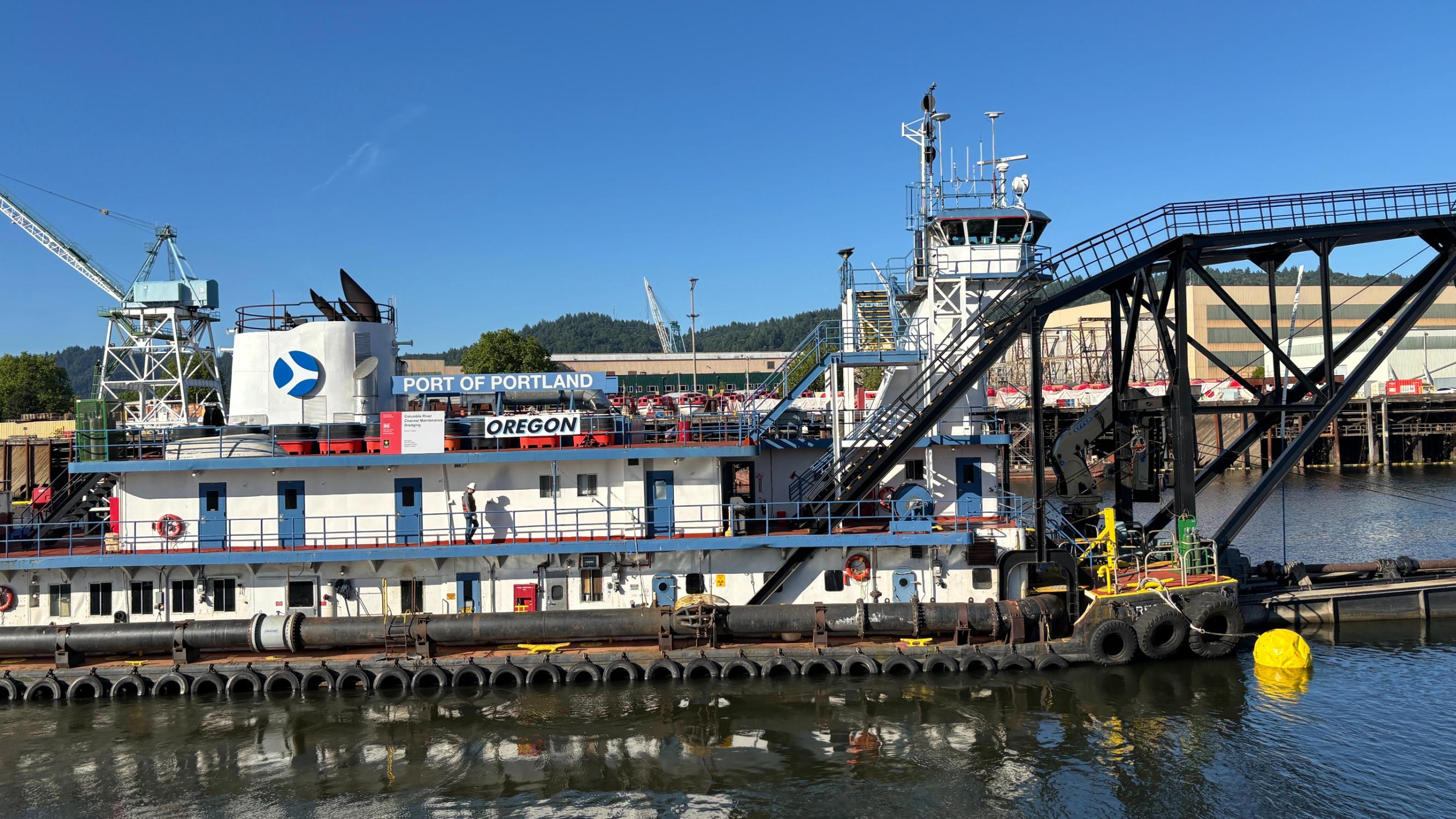Dredge Oregon launches 2025 season, keeping Columbia River deep and wide enough for ships

Today the Dredge Oregon launched its annual season on the Columbia River.
From now until around December, the crew of the Dredge Oregon will perform work that’s crucial to thousands of local businesses and jobs in the region—but is out of sight and mind for most Oregonians.
To ensure the river is deep and wide enough for ships, barges, vessels and tugs to safely travel between Portland and the Pacific Ocean, the dredge removes well over a million cubic yards of material annually—mostly sand and gravel—built up along the bottom of the navigation channel to restore it to a depth of 43 feet and width of 600 feet.
As a trade-dependent state, our marine highways play an important role in supporting the region’s economic health, creating jobs and ensuring ships can carry goods to and from our region—everything from imported tires, building supplies, consumer electronics, cars, and toys, to exported grains, produce, lumber, hay, sneakers and semiconductors.
How it works
The Army Corps of Engineers surveys the river throughout the year to find spots where sediment has settled and made the channel too shallow for commercial vessels, and the Port’s dredge crew visits these locations throughout its season.
Known as a cutter suction dredge, the Dredge Oregon functions like a massive canister vacuum. The dredge uses a rotating cutter head—essentially a giant egg beater—to stir up and loosen material along the river bottom.
The sand is then sucked up into a 30-inch-diameter pipe and funneled to its final destination—whether it’s deposited elsewhere in the river, used to replenish eroded beaches or used to build up islands.
While the Dredge Oregon is not the only vessel dredging the river (the Corps operates two of their own dredges and contracts for another each season), it’s the only one that can not only remove material from the riverbed, but also pipe it onto dry land or place it along beaches. Its pipeline floats on pontoons and can move materials over long distances—up to 2 miles away.
By the numbers
The Dredge Oregon and its crew are critical to the economic success of the entire network of 36 ports in the Columbia-Snake River system.
In Oregon, 1 in 8 jobs are tied to international trade in goods or services. Oregon companies export $42 billion in goods and services each year, and a majority of those exporting goods—88 percent—are small- and medium-size businesses.
When it’s out on the river, the Dredge Oregon operates 24 hours a day, six days per week, with a hardworking crew of about 45 members.
By the end of the 2024 season, it had scooped up and relocated 1.8 million cubic yards of sandy sediment.
In 2025, the Dredge Oregon expects to work at 8 to 10 sites between Portland and Astoria, including a stint in the river off Vancouver, Wash.




